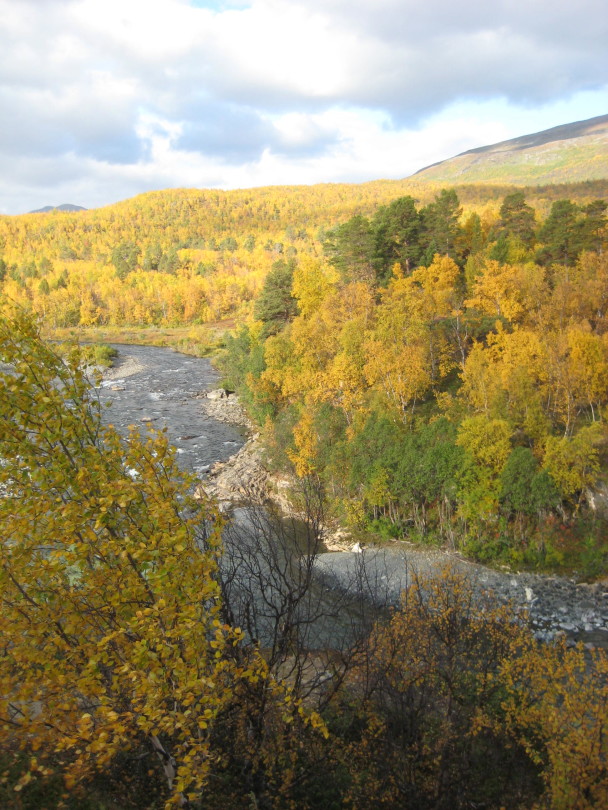The sub-alpine birch forest, in Abisko National Park in the northernmost part of Sweden, above the Arctic Circle. Last fall, I happened to visit at a rare time of sunshine, and in the low rays of the autumn light the leaves were pure gold.
On a chilly evening hike, I came across a roped-off area where there was some sort of boxlike machine. I went over to have a closer look, and a sign explained that it was part of a university study, a device for measuring rates of oxygen and carbon dioxide exchange in the forest.
There were birch trees all around me—thousands, perhaps millions of them. All covered with leaves, and all those leaves drawing in carbon dioxide, and releasing oxygen. I took a deep breath, inhaling all that oxygen. Breathe in. Breathe out.
All animals breathe in one way or another. It’s a familiar sound. The hah-hah-hah of dogs panting. The slow breathing of a cat, underlined by a purr. I’ve heard the long-drawn-out sigh of a whale breaching. But I never really thought about trees breathing. I mean, I knew that plants exchange atmospheric gases, absorbing CO2 and releasing oxygen, in a sort of cold-blooded textbook way. But you don’t really think about a tree taking a deep breath. It’s a different way to think about a forest—as a living, breathing entity.
It was dusk, the sun just sinking, the gold just fading from the hills. Not a whisper of wind, not a rustle of leaf. Just the trees. In the silence of the far north you could almost hear them breathe. 





Recent Comments